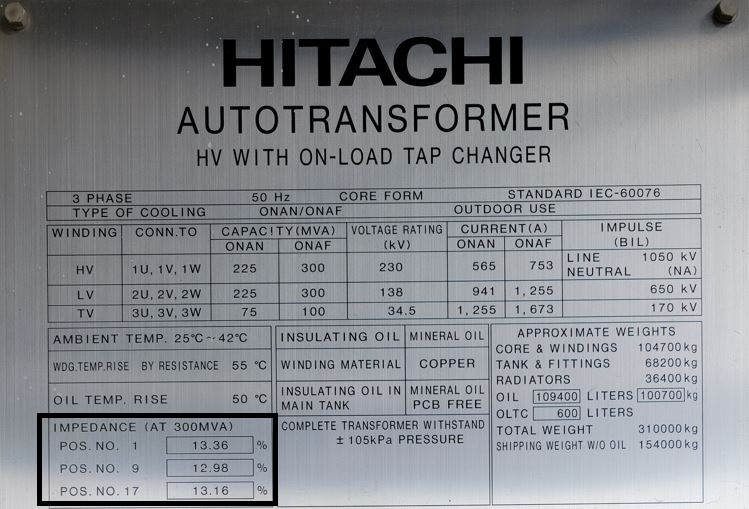To determine the transformer fault current we need to talk about one very important transformer parameter shoirt circuit impedence of a transformer.
The meaning of short-circuit impedance
The short-circuit impedance of the transformer is more often called the impedance voltage, and the symbol is Uk%.
The measurement method of impedance voltage is to short-circuit the low-voltage side of the transformer and pressurize the high-voltage side. When the current on the low-voltage side of the transformer is equal to its rated current, record the voltage value Ud on the high-voltage side at this time. The percentile of the ratio of Ud to the rated voltage Un of the high-voltage side of the transformer is the impedance voltage Uk%: that is, the

impedance voltage is very important, and it is the basic method for us to calculate the short-circuit current of the transformer. Connect the high voltage side of the transformer to an infinite system. If the short-circuit impedance is 5%, then the short-circuit current on the low-voltage side is 20 times the rated current. If the short-circuit impedance is 10%, then the short-circuit current on the low-voltage side is 10 times the rated current.
2. Calculation formula and examples of short-circuit current
The specific calculation formula of the short-circuit current on the low-voltage side of the transformer is as follows (the fourth edition of “Industrial and Civil Power Supply and Distribution Design Manual”):
If the capacity of the transformer is Sn, the rated current In of its low-voltage side is:
The three-phase short-circuit current of the transformer is:
Let’s look at an example: suppose the capacity of the transformer is 50000kVA, the rated voltage of the low-voltage side is 10.5kV, and the impedance voltage value marked on the factory nameplate is 16.7%, then the rated current and short-circuit current of the low-voltage side of the transformer are:
What is calculated here is the steady-state value of the short-circuit current. If you want to calculate the peak value of the inrush short-circuits current, it is equal to the short-circuit current steady-state value multiplied by the crest factor n. The crest factor is n=2.55 for the short circuit on the low voltage side of the main transformer. From this, we can calculate the peak impulse short-circuit current Ipk generated by the transformer:
3. Preliminarily determine the fault location according to the short-circuit current
It can be seen from this that when the low-voltage side of the transformer is short-circuited, the fault current is relatively large; if the fault current is relatively small, the inter-turn short-circuit of the transformer should be considered (the short-circuit current is about 2-3 times the rated current). According to the formula for calculating the short-circuit impedance of the transformer, its size is proportional to the square of the number of turns of the pressurized coil. It can be further judged by direct resistance, transformation ratio, short-circuit impedance test and chromatographic data analysis.
The potential gradient between the first turns of each coil is the largest, and the inter-turn short-circuit fault is most likely to occur. The fault location can be further judged by the oil chromatography data of the upper, middle and lower parts of the transformer.
To sum up, for a 110kV transformer, we can preliminarily determine the fault location according to the size of the short-circuit current, the protection action method, combined with the transformer capacity, short-circuit impedance, etc., which has a certain significance for reducing the maintenance time and reducing the workload of the on-site staff.